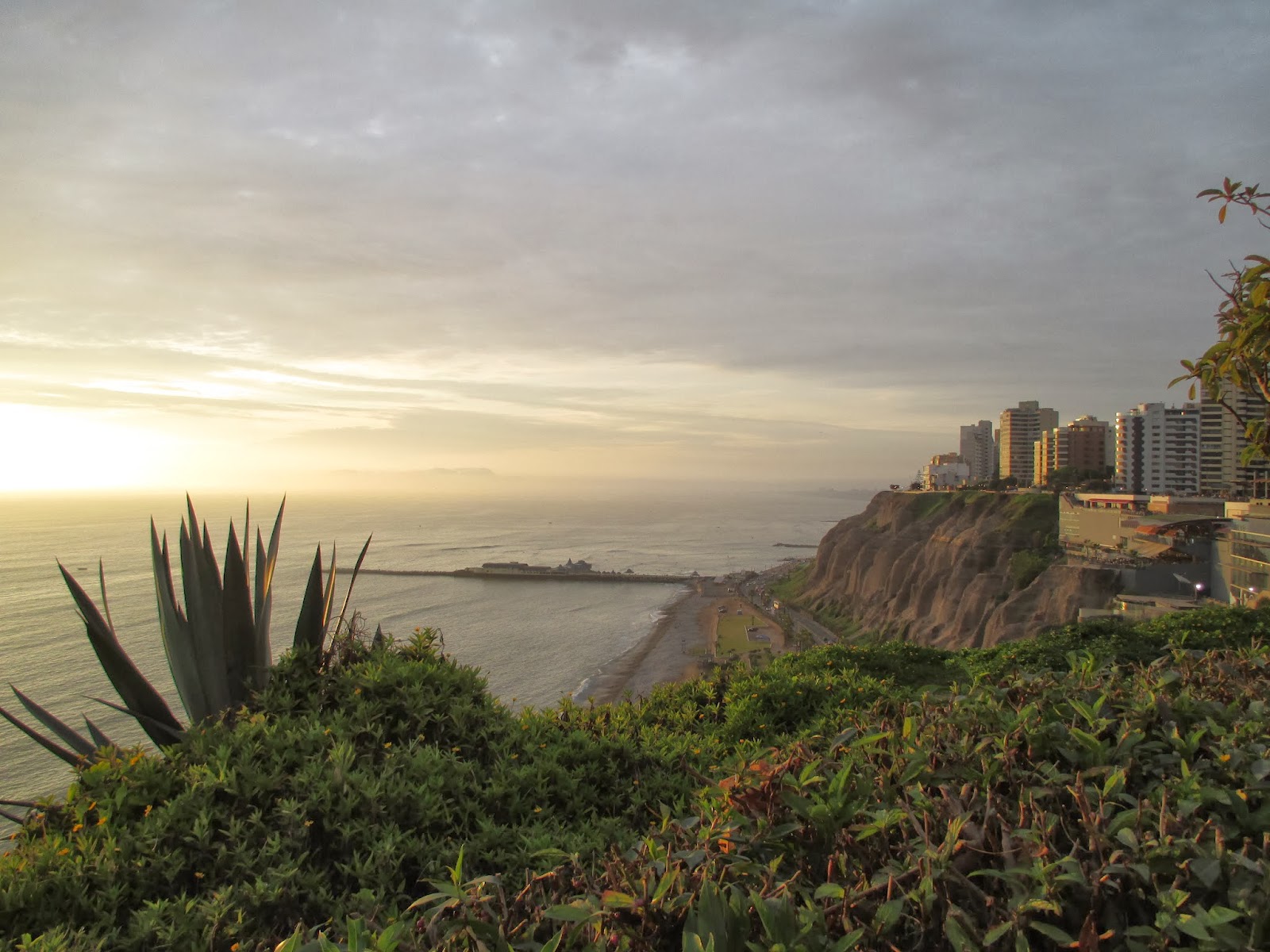Our hotel-bound highway was studded with 'tsunami evacuation' signs. That's one natural disaster I hadn't included on my list of Fiona-Killing Things In Peru. Lima by night was all palm trees, Pacific Ocean and lampposts. Having vowed to be up for breakfast, we rose from the dead at 12:30pm - whoops - and lurched outside to discover stunning coastal views across the street. Our hotel turned out to be located in the Beverly Hills of Lima, just down the road from a big shiny mall.
Guess where we headed first. Under a storm cloud of jetlag, we sought lunch somewhere safe - hola, TGI Fridays! - and were punished with flabby saladless burgers and iceless drinks. Between the three of us, we'd imported a sizable stock of food-related paranoia. No washed foods! No tap water! Nothing at all suspicious, and definitely no guinea pigs! We amassed huge quantities of bottled water and returned to the hotel for a brief collapse.
Faced with two options - face plant on the hotel bed forever or leave the room - I grabbed Kathy for a brisk walk along the cliff-edging path overlooking the coast. There were greenhouse-bright flowers everywhere, and trucks parked all over the beach. As we strolled by the highway, admiring the crucifix and Jesus statue parked out on the horizon, we got honked or wolf-whistled no less than 17 times. The locals are so welcoming! We dredged up Niki, dined on froyo, and soon returned to the vital mission of sleeping off the jetlag.
On our second day in Lima, we actually saw some of the city. In our defence, (1) jetlag, and (2) we'd been warned not to stray from the immediate neighborhood by ourselves. The reason for (2) became obvious very early on in our city tour. Our swanky neighborhood, Mira Flores, soon gave way to dustier, dirtier, plaster-peeling and faded central Lima. The visual culture shock started here.
Following a brief visit to the city museum, which housed stacks of ancient Peruvian artifacts, we walked to Mayors Square and admired the brilliant orange flower beds with their background of yellow buildings.
Next up was the St Francisco monastery, a gorgeous 18th century structure of Spanish design. Around a thousand pigeons swarmed the nooks of its facade. Our guide led us through most of the monastery, including the catacombs - a G-rated version of what you find under Paris - but not the actual church. Peru is a strongly Catholic country, as many rear window Jesus decals attest.
We returned to the hotel to meet the tour group we'd be joining for our Peruvian adventure over the next 21 days. There were only seven of us as we'd managed to book an off-season trip. Great first impressions all around. We followed our guide to the mall where we indulged in proper Peruvian cuisine: lomo saltado, a steak-based meal served with rice and chips. Double thumbs up for double carbs. Our Absolute Peru tour couldn't start soon enough.







No comments:
Post a Comment